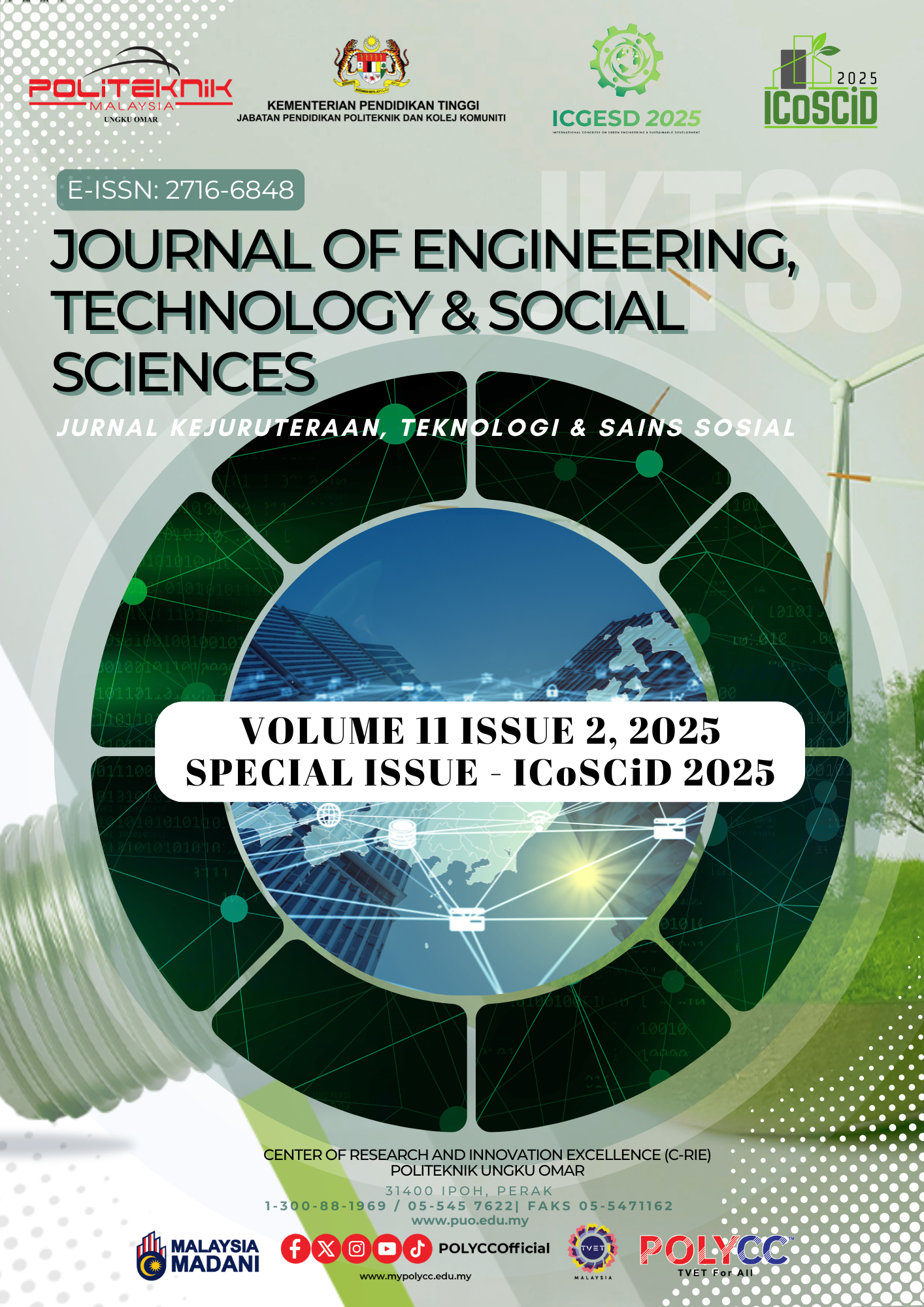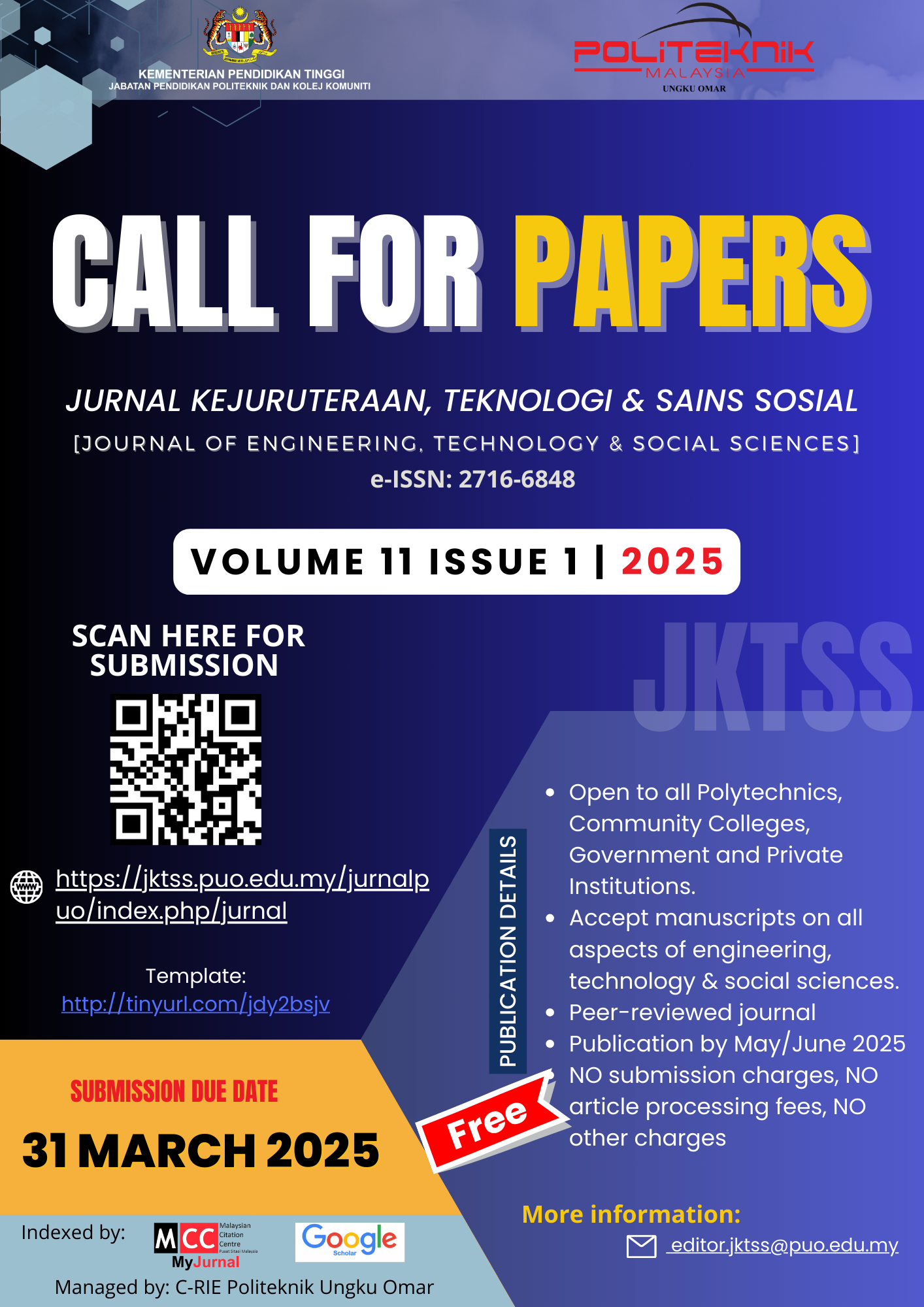EXPLORING THE DAYLIGHTING PERFORMANCE AT THE STUDENT RESIDENTIAL BUILDING AT POLITEKNIK UNGKU OMAR BY USING INTERNAL PARTITION
Keywords:
indoor daylighting performance; climate- based daylighting modelling (CBDM); daylight illuminanceAbstract
The recent global warning problem has a significant impact on architecture design as architecture have been forced to be careful regarding environmental impacts and sustainability. Insufficient natural daylight inside buildings leads to an increase in electrical consumption due to usage of artificial lighting. Hence, the objective of this study is to analyse the impact of daylight illuminance in different internal partition alternatives through climate-based daylighting modelling (CBDM) and compare the value of the target threshold found in the literature. The finding indicates that changing the internal partition layout in a student residential room and installing light shelf generate a robust impact on daylight sufficiency. The study revealed that the highest annual daylight sufficiency values belong to those internal partitions oriented perpendicular to the window with the installation of static light shelf. These improvements could provide a comfortable, productive, and healthy environment for occupants as well as savings in annual energy consumption. The impacts of internal partition as a typical interior design element on indoor daylighting performance in student residential buildings can be accessed. It also provides significant alternatives for architect regarding daylighting design in tropical countries, especially Malaysia.










